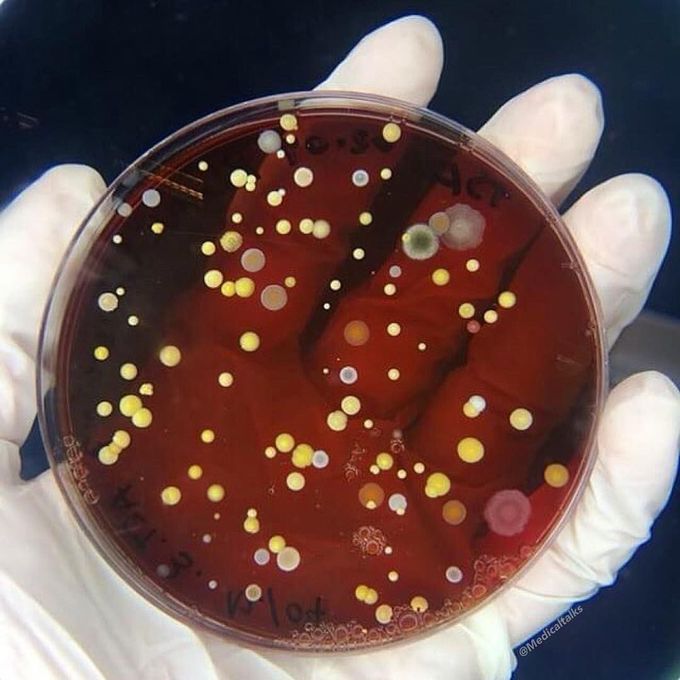


Cover your cough!
Colonies of bacteria growing on an agar plate obtained by coughing without a clinical mask!! The cough was aimed directly onto nutrient agar in a Petri dish. Agar plates are the standard solid support material for growing microorganisms. Microbial growth media contains nutrients and an energy source to fuel the microbes as they grow, and agar to keep the media in a semi-solid, gel-like state. In medicine, aerosol transmission has been defined as person-to-person transmission of pathogens through the air by means of inhalation of infectious particles. Particles up to 100 μm in size are considered inhalable (inspirable). These aerosolized particles are small enough to be inhaled into the oronasopharynx, with the smaller, respirable size ranges penetrating deeper into the trachea and lung. Aerosols are emitted not only by "aerosol-generating procedures”, but also transmitted whenever an infected person coughs, sneezes, talks, or exhales. Pathogens transmitted by respiratory aerosols can travel short or long range from the source depending on the size and shape of the particles, the initial velocity (eg, cough vs exhalation), and environmental conditions (eg, humidity, airflow). Droplet transmission is yet another form in which respiratory droplets carrying infectious pathogens transmit infection when they travel directly from the respiratory tract of the infectious individual to susceptible mucosal surfaces (nasal mucosa, conjunctivae, mouth) of a recipient. 5 µm has been defined as the particle size break point distinguishing between larger particles (droplet transmission) and smaller particles (airborne transmission). For diseases being transmitted by droplet route, surgical masks are recommended to protect the mouth and nose. Preventing the spread of pathogens by the airborne route requires the use of special air handling and ventilation systems.
Hemodynamic stimuli&nonhemodynamic stimuliEffects of sugar on teeth

